Home / Introduction
Introduction
It has been one thousand years since the completion of the Shahnamah (the Book of Kings), the poem that is Persia’s national epic. This narrative recounts the reigns of Persian kings and the deeds of their champions from the legendary accounts of the beginnings of civilization until the Arab Muslim conquest and the end of Persian rule in the seventh century. Although it is not known when the epic was first illustrated, countless copies of this poem have been made throughout the ages. The manuscript on view was produced in the early 1440s for the prince Muhammad Juki (1402–1445). A classically beautiful work, the Juki Shahnamah boasts sumptuous colors, striking compositions, and elegant calligraphy. It is the finest surviving Persian illustrated manuscript of its day.
The Shahnamah is nearly 60,000 couplets and was written by the Persian poet known as Firdausi (ca. 935–1026). The long central section of the story is concerned with Iran’s struggles against the neighboring kingdom of Turan and the feats performed by Rustam, a larger-than-life hero with fantastic strength. The historical section begins with Alexander the Great, although he too is treated as legend, and ends with the Sasanian ruler Yazdagird III (632–652).
Iran and much of Central Asia were ruled by the Timurid empire from the second half of the fourteenth century until 1506. The dynasty’s founder, Timur, was of Turco-Mongol origin but his descendants nonetheless adopted the Persian national epic as their own. Muhammad Juki was a grandson of Timur and a son of Shah Rukh (1377–1447). Scholars believe he had this Shahnamah made for him in the city of Herat in what is today Afghanistan. When Babur, a later descendant of the Timurids, founded the Mughal dynasty in Northern India in 1526, the manuscript was taken there, where it remained until the eighteenth century. It was owned by several successive Mughal rulers and later entered British hands as a gift to the Marquess of Hastings, Governor General of India. Lieutenant Colonel Charles Joseph Doyle presented it to the Royal Asiatic Society of Great Britain and Ireland in 1834. The book’s recent unbinding and conservation have provided an unprecedented opportunity to exhibit it publicly. This is the first time that all of its illustrations have been presented in the United States.
Scroll through all of the illustrations in the manuscript in the “Works in the Exhibition” page, or click on “A Closer Look” to learn more about the stories behind select paintings.
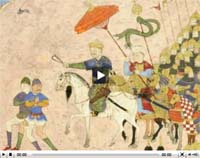


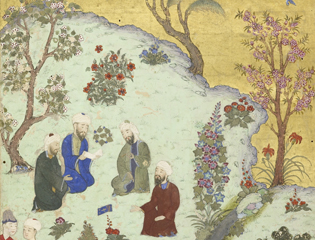
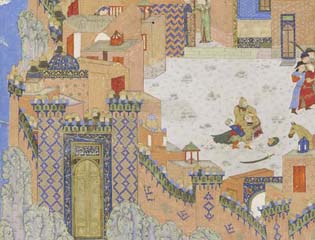
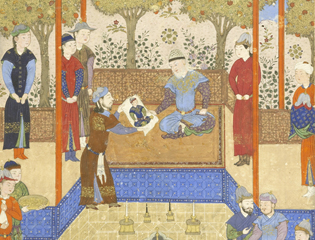
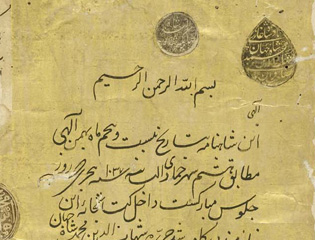
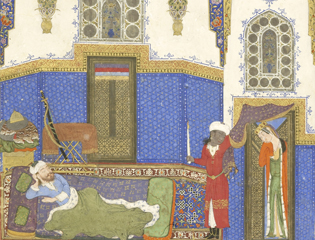
 Share
Share